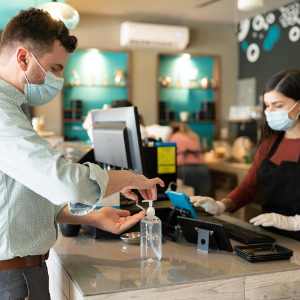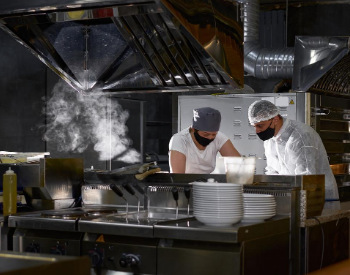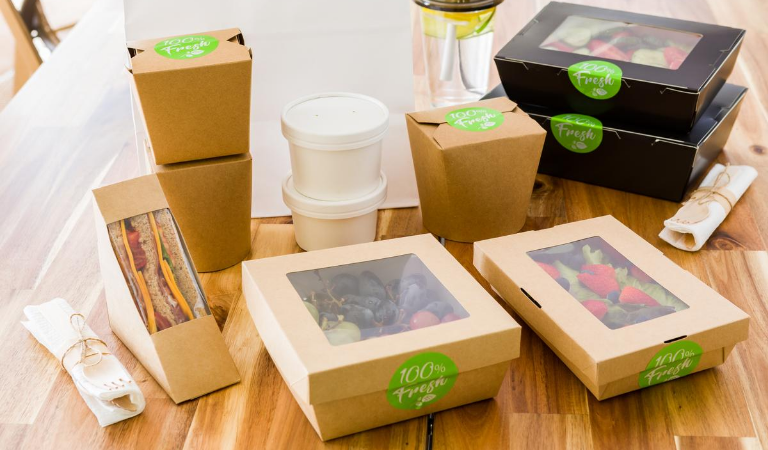Stats Of The Week
The State Of The Industry
Restaurants should expect to serve four types of customers in the next coming months during the pandemic, according to a survey from restaurant tech company Sevenrooms. First, “The Pick-Up Patron”, 27% of respondents said they won’t feel comfortable eating in a restaurant dining room until a vaccine for COVID-19 has been developed and will stick to ordering take out. Second, “The Safety-Savvy Consumer”, 22% of those surveyed want a detailed outline of a restaurant’s safety protocols, including physical barriers, at-table hand sanitizer, and having their food covered when brought to the table. Third, “The Tech-Conscious Contactless Diner”, 13% said they would only dine in a restaurant that uses contactless dining solutions like virtual waitlists, QR code-enabled order and payments, and contact tracing technology. Fourth, “The Carefree Guest”, 29% said they are comfortable with indoor dining and 42% said they are comfortable with outdoor dining.
Customers Excitement For Dining Out Grows
59% of consumers plan to dine-out as soon as they are able to, according to a new Oracle Food and Beverage study. The study found that customers are looking for reassurance when it comes to a restaurant’s cleaning procedures and technology to reduce contact with servers. 40% of participants said they would feel safer if they could view the menu and pay for their check using their mobile devices. Another trend emerging during the pandemic? More consumers are showing an increased desire in helping out independent restaurants with 39% of respondents ordering more frequently from local restaurants than before the pandemic.
What’s Trending
California Plans A Cautious Reopening For Restaurants
On Monday, California Governor Gavin Newsom outlined a path for restaurants to reopen called the Blueprint for a Safer Economy. The plan is an updated color-coded tier system for each county to achieve certain COVID-19 milestones before restrictions are gradually loosened. The framework is based on the average count of new coronavirus cases per 100,000 people per day along with the average positivity rate.
To advance through the tiers, counties will be assessed weekly and must meet the criteria for a less-restrictive tier for three weeks before moving to the next stage. If they fail to meet the next tier’s requirements, they could be moved back to a more-restrictive phase. Most of California’s 58 counties on Monday remained in Tier 1, which allows restaurants to open only for outdoor dining, take out and delivery with modifications. Bars, breweries, and distilleries that don’t serve food remain closed.
Ways Restaurants Can Prepare For A Second Wave
As fall and winter bring colder weather, health authorities fear that a second wave of coronavirus
infections may be inevitable for the United States. Unlike at the beginning of the pandemic, operators
are now more equipped to take on a second wave and draw on what they learned from the first wave. Here
are some of the most effective strategies and tactics restaurants have taken over the last five months,
according to Restaurant Business.
Try to keep your employees or maintain a strong relationship with them even if business slows down to be prepared for when business picks up again. Next, cut back your menu to streamline operations while reducing food and labor costs. More concise menus mean buying fewer ingredients, reducing food waste, and reducing ticket times. Create family-sized options at an affordable price to attract customers who are looking to get the most out of each meal during a struggling economy. Offer curbside delivery which has gained popularity amongst customers because it eliminates human-to-human contact. Orders are placed online and food runners can leave the take out bags in the customer’s trunk or backseat.
Consumers Prefer Ordering Through Restaurants Than Third-Party Apps
As COVID-19 forces dining room closures, food delivery continues to surge amongst consumers. Many consumers continue to show a preference for placing orders directly with restaurants as opposed to third-party delivery services. Customers prefer direct restaurant ordering to avoid delivery fees, creating a large opportunity for restaurants to promote their own channels. That means restaurants investing in self-delivery, enhancing their website or app, and capturing potential customers with targeted promotions.
"If I'm a restaurant, I need to invest in my first-party experience, I need to promote my first-party experience, and I need to give consumers what they want. Because ultimately, right now, they're being disintermediated by those third parties,” Eli Portnoy, CEO of consumer research firm Sense360, said during the Food on Demand conference.
NY & LA Extend Delivery Commission Fee Caps
New York City officials prolonged the timeline of its 20% cap on delivery commission fees that were first put in place in May. These commission fee caps are aimed to help lessen costs for restaurants during the pandemic. The cap was set to expire on September 18, but has been extended until restaurants in the city are able to operate at 100% indoor capacity, plus an additional 90 days. Los Angeles also expanded its 15% commission fee cap that was originally set to expire August 31. LA follows NYC with extending the cap to 90 days after restaurants are able to resume indoor dining capacity at 100%. The ordinance would also return into effect at any point if restaurants are mandated to reduce indoor capacity due to COVID-19.
How Operators Can Meet Consumers’ Safety Needs
The pandemic has raised consumers’ awareness of health and safety, especially when it comes to food
delivery. In order for customers to feel comfortable ordering from restaurants, operators must cater to
consumers’ safety concerns to gain their trust. Consider using tamper-evident packaging to provide
customers visible proof that their meal hasn't been touched or contaminated. Try using bags that are
sealed shut with a staple or sticker, pull-tab plastic containers, or tamper-evident seal boxes.
According to research conducted by WestRock, 59% of consumers say their perception of a restaurant would
be more positive if the restaurant began using tamper-evident packaging. Also, opt for durable and
leakproof containers that can hold up during transport and ensure your meals make it to customers in the
best condition.
Bright Spots In A COVID-19 World
Local Restaurant Puts The Soul In Soul Food
At Drexell & Honeybee’s in Brewton, AL, there’s a soul food restaurant with no cash register or prices. The owners, Freddie and Lisa Thomas-McMillan, make no profit from their restaurant with 100% of donations going back into serving food for people. Their menu changes daily but focuses on hearty Southern dishes like fried chicken, cornbread, and collard greens. Lisa told the Good News Network that the pandemic made running the restaurant a little more tricky but they figured out a way to do to-go orders while keeping everyone safe. Lisa feels proud to be able to do what she does and helping out those who’ve been affected by COVID-19.
“‘Feed the Need’ is our mission statement,” Lisa told GNN, “Whatever needs people have, if we can help them we will.”
Chef Redirects Funding To Help Those In Need
When Chef Danielle Leoni, co-owner of The Breadfruit and Rum Bar in Phoenix, AZ, got involved with Frontline Foods’ Phoenix she noticed those first responders were able to get food fairly easily and thought of others who were not as fortunate. As pandemic-related unemployment rose in the area, affecting local families, Leoni came up with the idea of redirecting funds to families in need. Leoni began working with a group called A New Leaf, an organization that provides shelter to families affected by domestic violence and poverty.
The program includes partially prepared meal kits with recipe cards that can feed up to four people. Packaged with the meal kits is helpful information for food-insecure families including public transit, farmers' markets, Arizona’s Supplemental Nutrition Assistance Program (SNAP), and Double Up Food Bucks, which can be spent on Arizona-grown produce.
Quote Of Hope
“There have been times during all of this when I think about what is the point, but I remind myself it’s about giving other people hope. The goal is to weather the storm.” - Nina Compton, James Beard award-winning Saint Lucian chef








